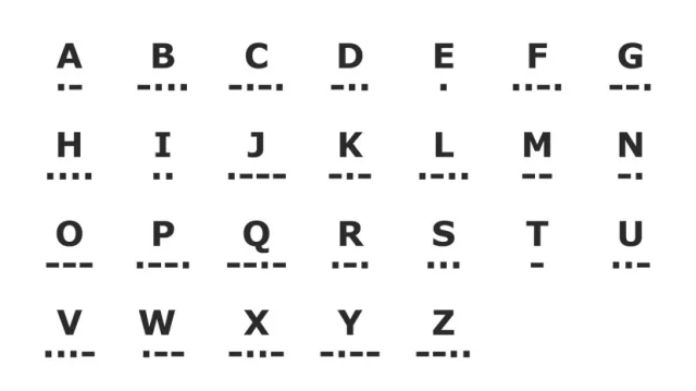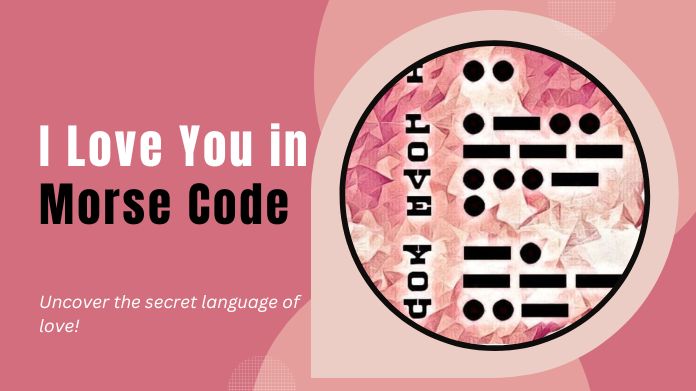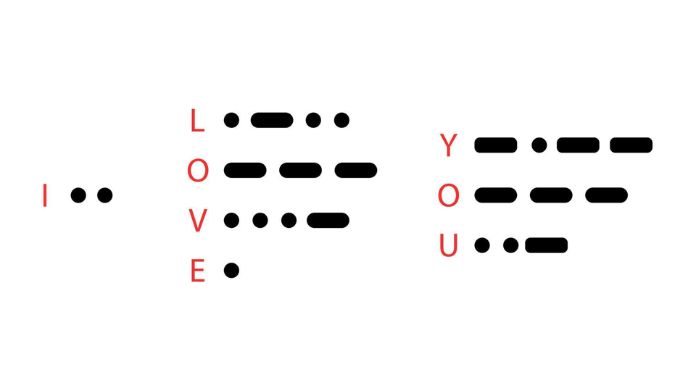Love is a language that knows no boundaries, cultural boundaries, or time limits. Although there are a million ways to say “I love you,” one unusual and fascinating way is to use Morse code.
Created for telegraphy and long-distance communication, morse code has developed into an intriguing means of expressing love and other emotions.
This thorough guide will go step-by-step through the background of Morse code, its importance in communication, and how to say I love you in Morse code.
This Morse Code Translator article has all the information you need to propose in this unique way, whether you’re a romantic at heart, a Morse code enthusiast, or just curious.
History of Morse Code

Before delving into the art of expressing love in Morse code, it is imperative to comprehend the background of this distinct mode of communication.
Samuel Morse and Alfred Vail created the Morse code in the early 1830s. It was initially intended for telegraphy, a revolutionary technology that used electrical impulses to send messages across great distances.
The Morse code system comprised a sequence of dots and dashes, each denoting a letter, number, or symbol. This binary system revolutionized long-distance communication by enabling messages to be transmitted quickly and efficiently.
Communication in Morse Code
Both military and civilian applications extensively used Morse code, which soon became the industry standard for telegraphy.
Because it could be transmitted via radio waves and light signals (visual or radio Morse code), Morse code was essential for military communication during World War II. Soldiers and telegraph operators relied on Morse code to send messages that were often a matter of life and death.
Over time, as technology advanced, Morse code lost its prominence in mainstream communication. However, it has yet to disappear and has maintained a niche following among amateur radio operators, Morse code enthusiasts, and hobbyists.
What Are Morse Code Dots and Dashes?
The dots (·) and dashes (-) comprise the basic yet efficient Morse code system. The combination of these elements represents letters, numbers, and other symbols. In Morse code, a dash is usually three times the length of a dot.
A dot is the fundamental unit of time. One dot separates symbols that are identical to one another, three dots separate two letters, and seven dots separate two words.
Because Morse code uses dots and dashes, it can be used for visual and audio communication. It can be communicated by light signals, like flashing, or sound, like tapping.
What Are Morse Code Alphabets and Numbers?
Two sets of symbols make up Morse code: one represents the English alphabet, and the other represents numbers. Here are a few illustrations.
1: · – – – – 2: · · – – – 3: · · · – – A: · – B: · · · · C: · · · ·
Acquiring knowledge of the Morse code alphabet and numbers is imperative before communicating any message, even as simple as “I love you.”
How to Say I Love You in Morse Code?

Now that you know the fundamentals of Morse code, let’s dissect the words “I love you in Morse Code” into their individual Morse code components.
Three words make up the expression “I love you”: “I,” “love,” and “you.” Each word will be translated independently before being combined.
“I” is three dots from the following word and translates to · ·.
“Love” is represented as · – · · and is placed three dots apart from the last word.
“You” means · · – – and brings the message to an end.
How to Translate I Love You in Morse Code?

Let’s now merge these translations of Morse code.
“Love” (· – · ·) + “You” (· · – -) + “I” (· ·) = (·· +· – · · +···· – –)
Therefore, the following series of dots and dashes would be used to say “I love you in Morse code”: * * * + * – * * * + * * – *
How to Express Love With Morse Code?
A creative and original way to show love and affection is using Morse code. These are some suggestions for making your romantic gestures include Morse code.
1. Handwritten Love Notes: Encode your sentiments in Morse code and send your sweetie a love letter only they can decipher.
2. Jewellery: Custom jewellery can be designed using Morse code patterns to spell “I love you.” It’s a delicate and unique way to keep your love close to your heart.
3. Voice Messages: Create a message in Morse code on your phone and send it to someone special. Your sincere words can be discovered by listening to them and deciphering the message.
4. Art and Décor: Make love-expressing artwork or décor using Morse code. Hang them throughout your house as a constant reminder of your affection.
5. Flashlight Signals: From a distance, use a flashlight to communicate with a loved one using Morse code. This kind of communication can be lighthearted and enjoyable.
The Emotional Impact of Morse Code
Because of its historical importance in communication and its association with a bygone era, Morse code has a particular emotional resonance.
Learning Morse code and using it to communicate your emotions demonstrates a commitment and effort that can profoundly affect the other person.
Deciphering a message encoded in Morse code adds an element of surprise and excitement. An enticing message of love and affection awaits those who solve the puzzle.
Final Note
There are many ways to say “I love you,” but Morse code is a unique and memorable option. It is a significant means of expressing love and affection because of its significance, history, and timeless appeal.
Thanks to this thorough guide, you now possess the understanding necessary to decipher Morse code, convert “I love you in Morse code”, and develop original ways to show affection.
Your message will have a unique and memorable touch whether you decide to use Morse code creatively, wear jewellery made of Morse code, or send a handwritten love note.
So, give Morse code some thought the next time you want to show your love uniquely and captivatingly. After all, saying “I love you” is a message that transcends time and technology, and Morse code is a timeless language that can help you convey it in a truly extraordinary way.
